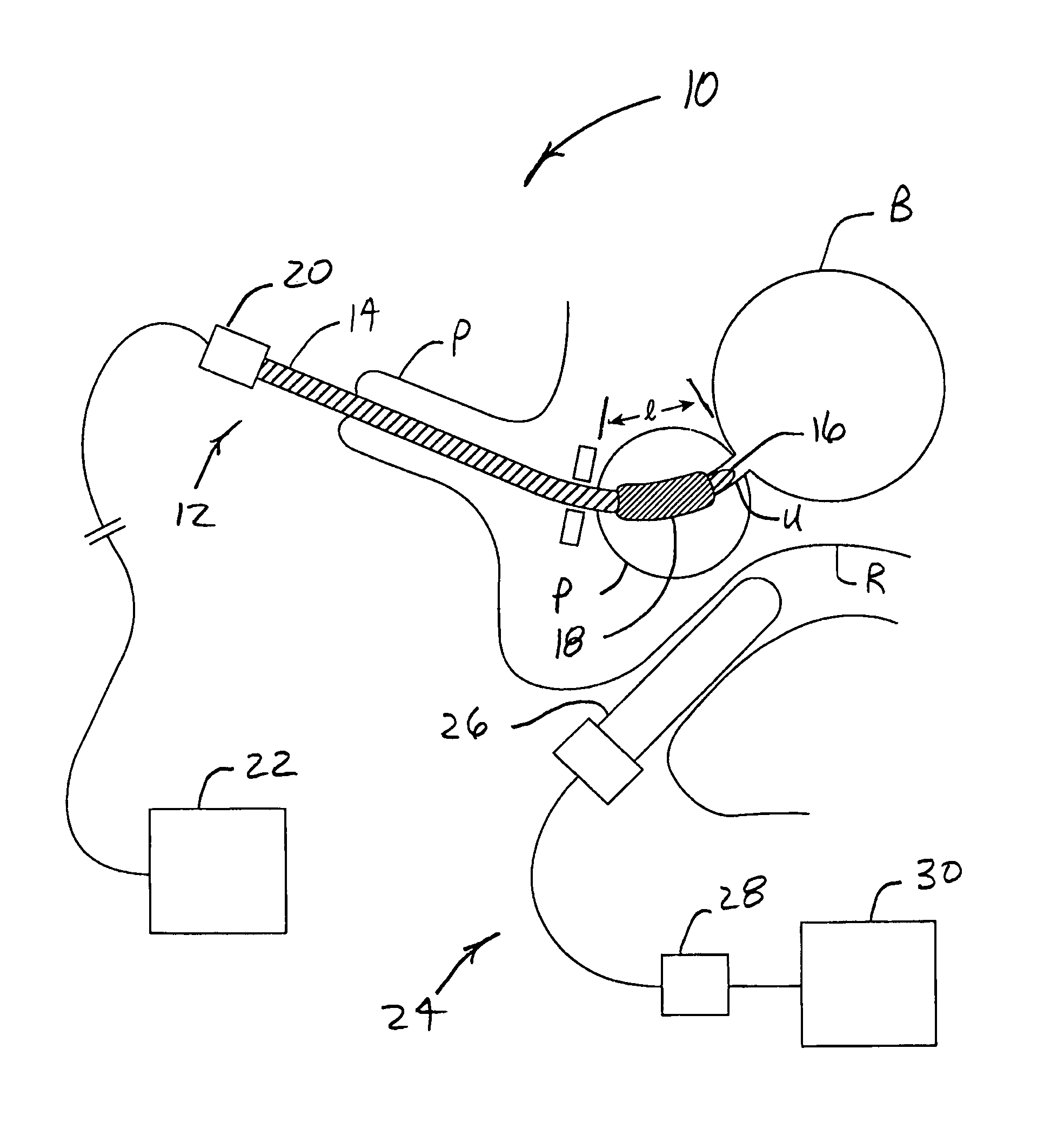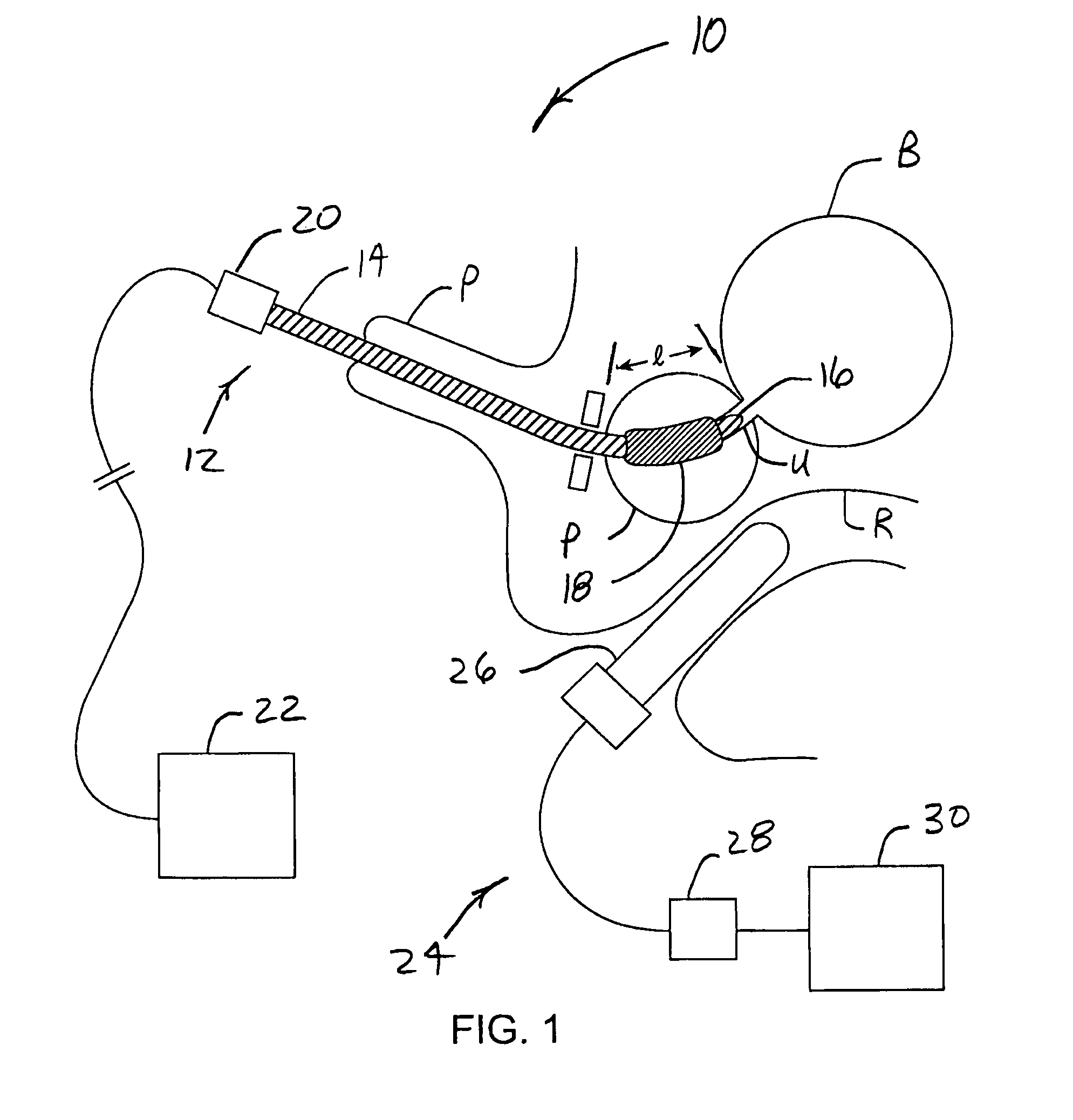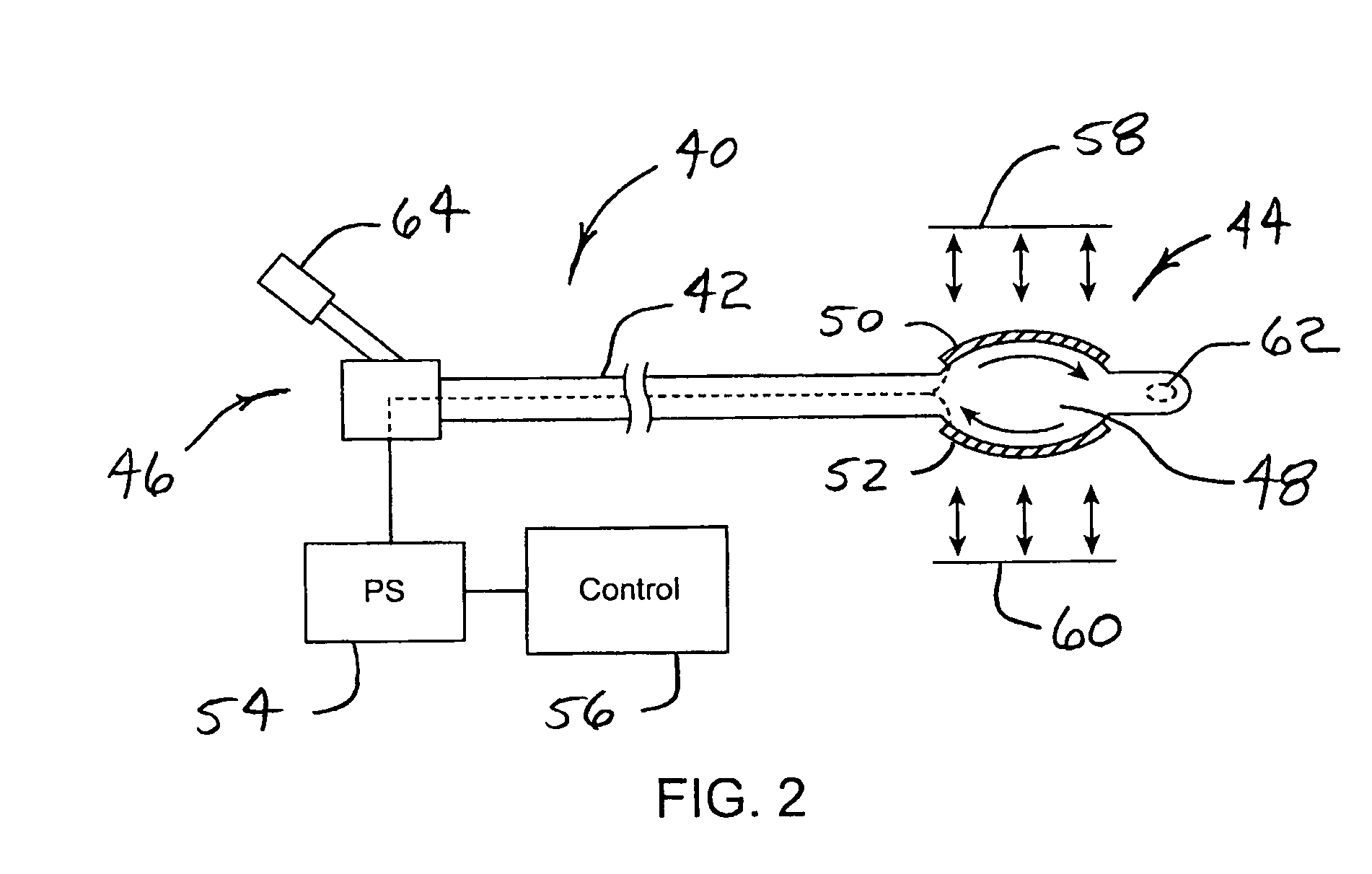Transurethral systems and methods for ablation treatment of prostate tissue
a transurethral system and prostate tissue technology, applied in the field of transurethral system and treatment of prostate tissue, can solve the problems of limiting the ability of reproduction, experiencing partial or complete urinary obstruction, damaging the dna of the prostate gland, etc., and achieves low power ablation and low hyperthermia.
- Summary
- Abstract
- Description
- Claims
- Application Information
AI Technical Summary
Benefits of technology
Problems solved by technology
Method used
Image
Examples
Embodiment Construction
[0033]The present invention includes systems and methods for more precisely controlled energy deliver to prostate tissue for applying fields, including controlled delivery and generation of mild heating or hyperthermia to prostate tissue for the destruction of cancerous and / or treatment of hyperplastic prostate cells for treatment of benign prostatic hyperplasia (BPH).
[0034]The systems and methods described herein generally utilize an elongate urethral probe that can be inserted in the urethra of the patient and advanced along the patient's urethra for positioning at a desired location. A urethral probe can include distal expandable member or balloon configured for expansion in the urethra of the patient. The expandable member includes conductive electrode elements patterned or disposed on an outer surface of the expandable member. The distal portion of the urethral probe is inserted into the urethra and advanced to position the expandable member at a target location in the patient'...
PUM
 Login to View More
Login to View More Abstract
Description
Claims
Application Information
 Login to View More
Login to View More - R&D
- Intellectual Property
- Life Sciences
- Materials
- Tech Scout
- Unparalleled Data Quality
- Higher Quality Content
- 60% Fewer Hallucinations
Browse by: Latest US Patents, China's latest patents, Technical Efficacy Thesaurus, Application Domain, Technology Topic, Popular Technical Reports.
© 2025 PatSnap. All rights reserved.Legal|Privacy policy|Modern Slavery Act Transparency Statement|Sitemap|About US| Contact US: help@patsnap.com



